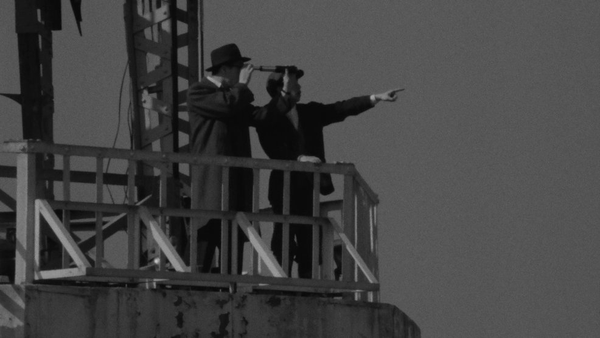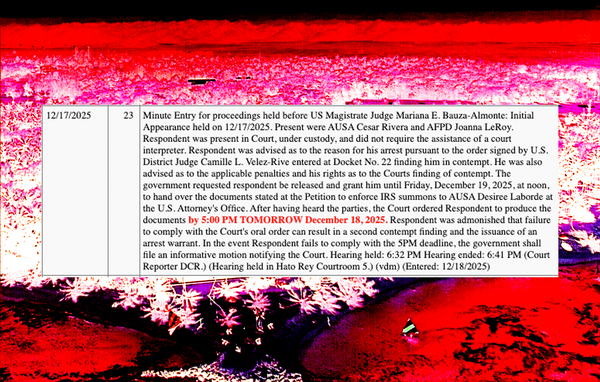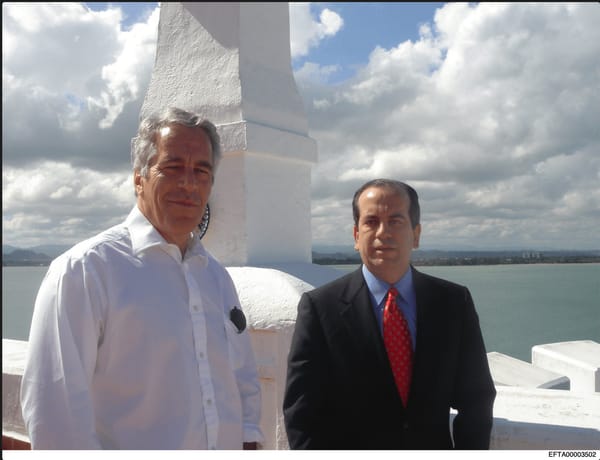FBI Installed Three Antennas Across Puerto Rico to Aid Surveillance Operations
Procurement records and a corporate document point to the Justice Department installing a wireless video collections system in 2024 across the archipelago to support surveillance and security applications.
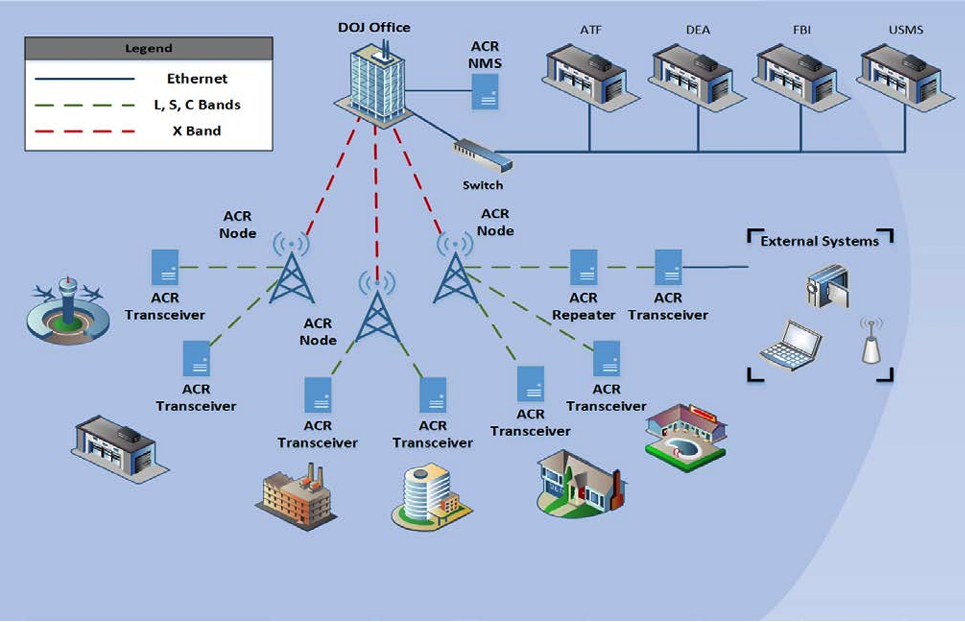
It shouldn't be a surprise to learn that you're pretty much always under some type of surveillance wherever you go. Whether it be through security cameras, data mining, or biometric tracking, someone's always got metaphorical eyes on you. While some of this surveillance panopticon was created by corporations to sell you something, it was mostly created by government agencies in the post-9/11 explosion of the security state.
So, when I stumbled upon records that show the FBI installed antennas for a wireless video collections system meant to centralize and transmit surveillance footage in three locations across Puerto Rico in 2024, my ears perked up.
The system, called Adaptive Central Receive Systems (ACRx), is part of a "shared technology initiative to support law enforcement video surveillance operations,” according to a 2017 DEA request for proposals for its installation. The DEA document explains the ACRx network is meant to be shared between the Justice Department and its law enforcement sub-agencies.
“The DOJ agencies have a requirement to monitor video from stationary and mobile cameras deployed within urban environments. This wireless video capability will support special events, surveillance and security applications,” the DEA document reads.
I'll spare you the technical explanation of how the ACRx works, but it's essentially meant to transmit multiple surveillance camera feeds to a centralized location. The installed antennas (called ACR nodes) receive footage from camera transceivers, then send them to the different agencies. An operational concept image in the DEA document shows transceivers deployed at houses, hotels, factories, and airports. The document specifically mentions that transceivers should have the ability to turn off all visual and auditory indicators.
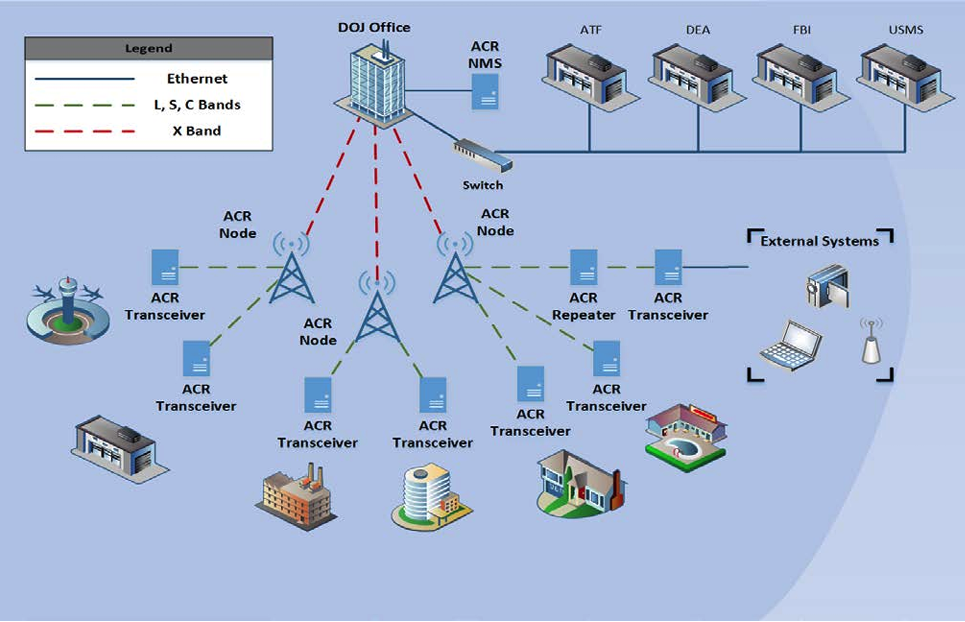
ACRx nodes were installed in the Gurabo, Ponce, and the El Yunque rainforest in Río Grande last year, according to a past services document from Yankee Microwave, the company that installed them. The latter two received maintenance in April, per the document, which can be found on the company's website.


However, the only procurement records I could find from the company list the installations as being performed in San Juan and Jayuya. Both contracts are with the FBI and are collectively worth over $140,000.
It's possible these records correspond to the installations listed by Yankee Microwave but they simply have different locations listed. The Jayuya procurement record lists the installation location as the "WAPA TV Tower Site," which is in Punta Cerra, right along the municipality's border with Ponce. Meanwhile, another procurement record with a second company mentions the installation of a rooftop node "for the Gurabo Tower... as part of the San Juan ACRx system." Gurabo is part of the San Juan metropolitan area.
The El Yunque node was installed in the "El Yunque Tower," according to a procurement record with a third company, likely referring to one of the several telecommunications towers on the forest's mountaintops.

The DEA document specifically mentions putting the nodes on towers, tall buildings, or mountain tops. These are all locations where antennas can maximize their reach and minimize signal obstruction because they're above everything else around them. El Yunque and Cerro Punta already have other communications towers there for that reason.
The ACRX is meant to maximize coverage and support a scalable number of surveillance streams while minimizing the amount of nodes needed, according to the DEA document. Between one and four nodes should be enough to cover most of a metropolitan area depending on a variety of factors, such as building density and terrain. Regardless of their exact location, the nodes in Puerto Rico give the FBI and other agencies coverage of much of the northeast and some of the south of the archipelago.
It is unknown if any cameras and transceivers have been deployed as part of the installation of the nodes. I’m filing some FOIAs and will give an update if/when I receive anything back.
The Yankee Microwave contracts with the FBI are part of an indefinite delivery/indefinite quantity contract for the ACRx. This means that the agency can request as many supplies or services as it wants during a fixed time period, which ends on Jan 27, 2026. Yankee Microwave has also installed the technology in states like California, Virginia, and Florida, according to their past services document.
As pretty much everybody who knows me has heard me say, there is exceedingly little critical coverage of law enforcement agencies, their methods, and their tech in Puerto Rico. In fact, most of the "reportage" about them is fawning and encourages the government to give them more money. Understanding the technology they use to surveil and police us is a tiny step toward creating a world where the surveillance state ceases to exist.



